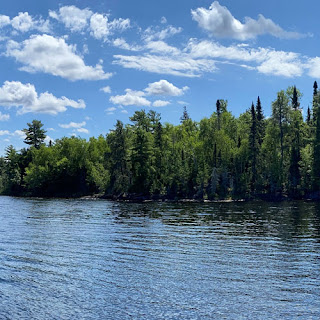 |
| Saginaw Bay - Lake Michigan Credit: NPS |
Water quality in the western Lake Erie and Saginaw Bay watersheds is getting a major boost: a $4 million initiative aimed at advancing wetland restoration and reducing harmful algal blooms in the two regions.
The Michigan Department of Natural Resources (DNR) and Ducks Unlimited (DU) are partnering on the project, through the Lake Erie and Saginaw Bay Wetland Conservation Program (WCP) with funding from the American Rescue Plan Act (ARPA).
DU will administer the ARPA and WCP funds and is already looking for local municipalities and private landowners interested in taking action to restore wetlands on their property.
The Michigan Department of Environment, Great Lakes, and Energy and the Michigan Department of Agriculture and Rural Development also are partnering on this project.
In the Great Lakes, harmful algal blooms have become a frequent problem. HABs are caused by increased levels of nutrients (phosphorus and nitrogen) from fertilizer, wastewater, and stormwater runoff that then infiltrate waterways.
Such blooms occur in western Lake Erie and Saginaw Bay every year. HABs can contain toxins that are poisonous to wildlife, pets and people. They cause areas known as "dead zones" that have little or no oxygen, which can result in massive fish die-offs.
Blooms can also close water to swimming, fishing, boating and other water-based recreation, and make drinking water unsafe for human consumption.
A toxic bloom once caused a water supply plant in Toledo, Ohio, to shut down because it was being overwhelmed by the amount of algae. Saginaw Bay runs the same risk with its water supply infrastructure.
Healthy wetlands will help reduce excess nutrient levels in the water, which is key. They absorb carbon and nutrients and function much like sponges, absorbing and storing water during heavy rainfall and releasing it during drier seasons.
The $4 million program is part of the DNR’s larger Michigan Legislature-allocated $10 million ARPA grant (in 2021) for wetlands to improve water quality.
The DNR and DU will use the additional $6 million of ARPA funds to support the advancement of several wetland projects that are already underway or in the planning stages, such as those at Crow Island State Game Area in the Saginaw Bay watershed and a water quality-focused wetland project in the Lake Erie watershed.
The goal for these wetlands is to reduce phosphorus, nitrogen, and sediment entering the waters of Lake Erie and Saginaw Bay.
source: Michigan Department of Environment, Great Lakes, and Energy